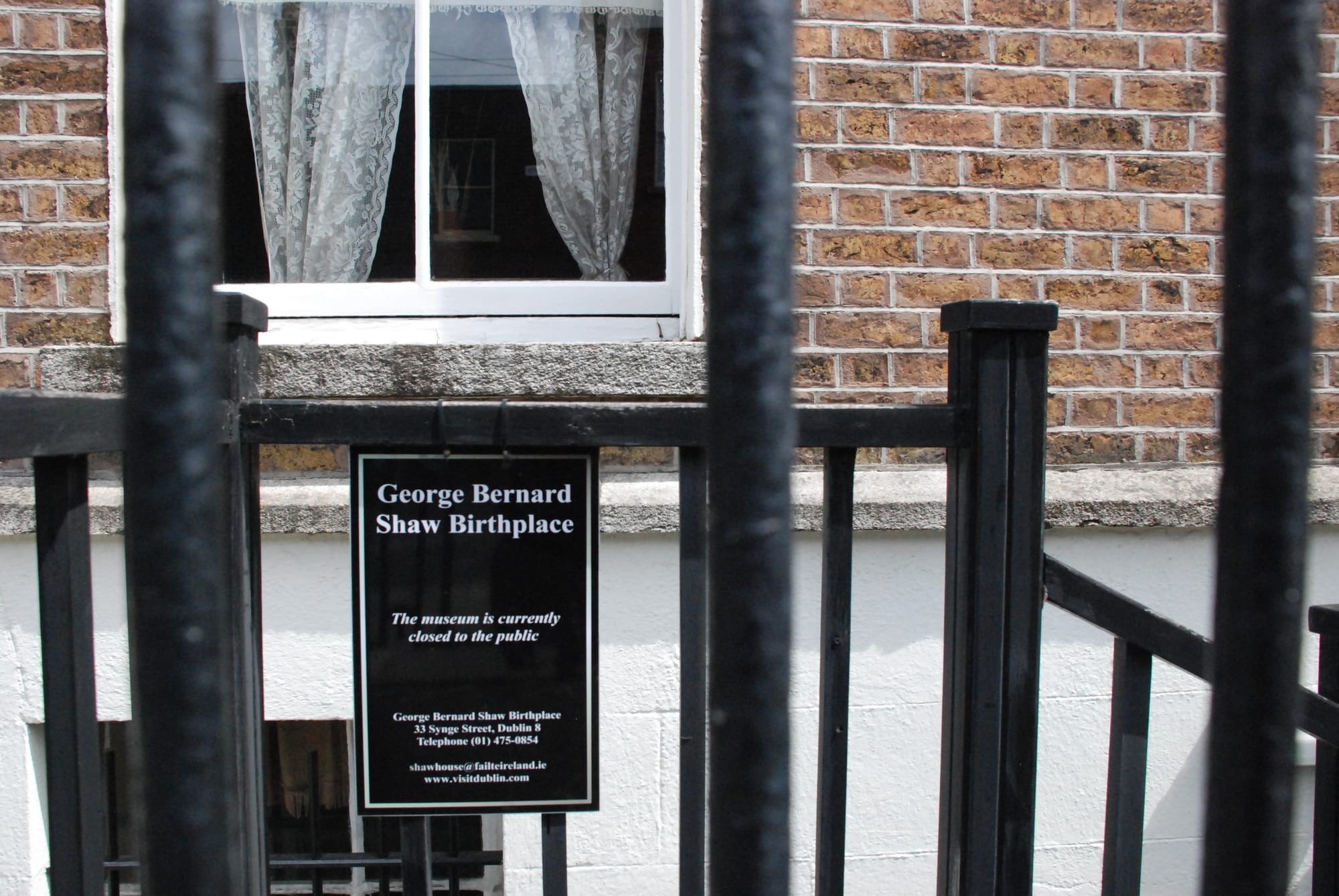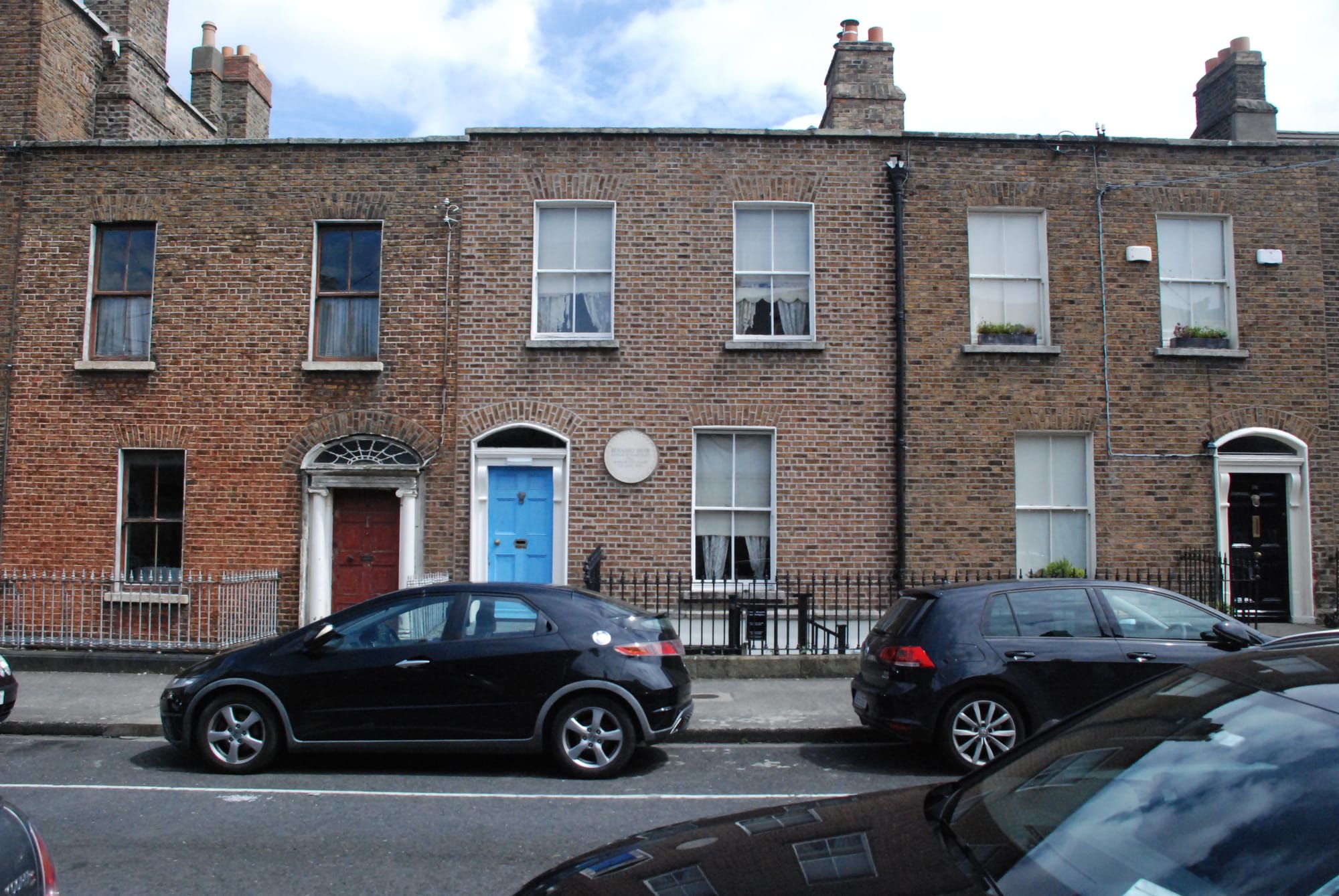What’s the best way to tell area residents about plans for a new asylum shelter nearby?
The government should tell communities directly about plans for new asylum shelters, some activists and politicians say.
Keeping the Nobel Prize winner’s former home as a museum hasn’t really worked out. So Dublin City Council is looking into giving it a new life, with a new purpose.

Through the letterbox, you can still see the exhibits of the museum that has been more or less closed to the public for the last four years.
Framed pictures hang on walls. Tattered drapes line the windows.
On the front of the house, the large, marble plaque is still relatively clean, the golden door knob not unduly tarnished.
Yet few have darkened the bright, blue door of 33 Synge Street in recent times.
Since 2012, the birthplace of George Bernard Shaw has sat idle on a terrace leading towards Lennox Street.
Now, with the backing of Dublin City Council’s Arts, Culture and Recreation Strategic Policy Committee (SPC), Labour councillor Mary Freehill wants to reopen the house.
First opened in 1993, the museum was previously run directly by Dublin Tourism, which amalgamated with Failte Ireland in January 2012.

A small plaque to the side of the house notifies passers-by that the museum is now closed to the public. So what caused its demise?
One Yelp review from 2009 notes that a “quaintly archaic audio cassette guide” was included with the visits. The décor was aimed, notes another review, at giving “the impression that the family have just gone out for the afternoon.”
Through the windows, you can still see the furnishings and items designed to channel the feel of 1860s Dublin. The museum’s rudimentary recreation style worked well, it seems, for a time at €6 a pop.
However, the demand wasn’t there. The small red-brick house only opened normally to the public from mid-June to the end of August, according to Failte Ireland spokesperson Alex Connolly.
“Visitor numbers were very low,” said Connolly in an email response. “In order to prioritise our limited budget and staffing, it was decided that the museum would only open on request pending a longer term solution for its use.”
Four year later, no such use has been found. But councillor Mary Freehill reckons she has the answer.
And so, last week, at the monthly Arts, Culture and Recreation SPC meeting, councillors agreed a motion that requested that the birthplace of the Nobel Prize-winning author be turned over to Dublin City Council.
Freehill argues that if other bodies aren’t willing to reopen the Synge Street spot, the council should. “It’s part of our heritage,” she says. “Dublin has the UNESCO City of Literature [designation] and for the city of Dublin to let George Bernard Shaw’s house go would not be acceptable.”
As Freehill sees it, Shaw’s importance trumps state body funding, or a lack thereof. The blue door of the birthplace of the famed wit, socialist and playwright deserves to be reopened.
While dozens of blue plaques spread across Dublin properties commemorate long-dead authors, statesmen and painters, there are few so large as the marble sphere at 33 Synge Street.
And few of these dead authors were ever afforded the opportunity to write their own epitaphs in stone. Shaw was among those few.
According to Desmond Fisher, writing in the Irish Times in 2011, Shaw took umbrage at the inscription originally proposed for the plaque.
A local Synge Street dustman named Patrick O’Reilly, notes Fisher, wrote to Shaw to say he had collected enough money to erect a plaque in honour of the octogenarian author.
Would “He gave his services to his country, unlimited, unstinted and without price” do as a tribute? asked O’ Reilly.
Nonsense, “a blazing lie” replied Shaw, who suggested the inscription himself that can now be seen at the defunct museum.
The words “Bernard Shaw, Author of many plays was born in this house, 26 JULY 1856”, placed within a shamrock wreath, would suffice, suggested Shaw.
His early life on Synge Street was described by the playwright himself as “rich only in dreams, frightful and loveless in reality”. His father was an alcoholic, and, following a miserable childhood, Shaw left Dublin for the last time in 1876.
In 1924, he received the Nobel Prize for Literature, and over a 94-year-life-span wrote plays, political commentaries, novels, short stories and literary criticism.
It’s all the more reason, says Little Museum of Dublin Director Trevor White, for the now-closed property to reopen.

“The house itself is of enormous significance,” he says. “Whatever you think about George Bernard Shaw, the fact is he was a global literary figure, one of the great Irish writers.”
According to Failte Ireland spokesperson Alex Connolly, “maintenance works are being conducted at the George Bernard Shaw Museum and access is restricted until completion”.
Yet, three times over the last week, there was neither sight nor sound from outside or inside the house.
Labour’s Freehill says that if the property is turned over to Dublin City Council in the future, it should be for writers.
“It wasn’t really successful as a museum because it was probably too small but I think it could have other uses,” she says. “I would see it as an ideal writer-in-residence space for some of our visiting writers.”
“I think it would be absolutely wonderful,” she says. “There are so many writers out there who would love to come to Ireland to write and work in George Bernard Shaw’s house.”
While the council does operate a number of artist-in-residence spaces, such as The Lodge in St. Patrick’s Park and Albert Cottages in Glasnevin, it’s early days for Freehill’s proposal.
The next step will be for DCC Arts Officer Ray Yeates to write a report on the possibility of the transfer, said Freehill, following last week’s motion.
“It’s given him [Yeates] the freedom to go off and make sure the house isn’t sold in the meantime,” says Freehill. “The motion is the first step in stating our interest.”
Yeates was quick to note that “this is entirely exploratory at the moment” but, if successful, “it would involve transfer of ownership to Dublin City Council”.
It’s unclear how cost-effective a writers-in-residence space would be, and Failte Ireland could not confirm any intention to reopen the property or to hand it over to Dublin City Council.
The body “does not operate tourism attractions directly”, said spokesperson Connolly, but it “has engaged with a number of stakeholders in relation to the future status of the museum, to engage and explore alternative options for its future operation”.
Get our latest headlines in one of them, and recommendations for things to do in Dublin in the other.